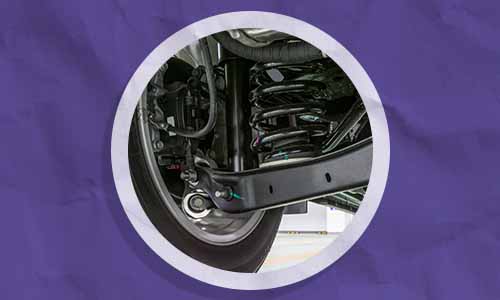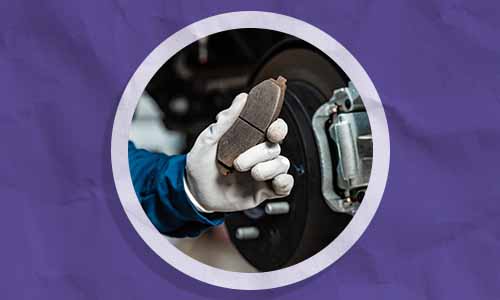How to calculate your car’s running costs
Running costs are a key consideration for many car buyers. After all, the cost of keeping a car on the road can vary dramatically depending on the model in question.
You can often get a rough idea of how much a particular model might cost to run by researching it online. However, it’s worth taking the time to break down a comprehensive list of all the expenses you might encounter to help you calculate real-world running costs with greater accuracy.
Don’t forget, the overall cost of running a car incorporates more than the cost of fuelling or charging the vehicle. In this guide, we’ll highlight some of the additional costs of car ownership that you should factor in before buying your next motor.
Get a free valuation
Overhead costs

Car insurance
How much it costs to insure a car depends on a range of factors, such as the driver’s age, level of experience and postcode – in addition to the car’s age, model and condition. The type of insurance policy (e.g. third-party only, third-party fire and theft or comprehensive) may also affect the cost.
-
How to calculate insurance costs
You can calculate your car’s insurance costs using the following equation:
Insurance premium ÷ Annual car mileage x 100 = Cost per mile (pence)
Car depreciation
Depreciation is the difference between what a car was worth when it was brand new and its current value. All cars depreciate at different rates, with some cars holding their value better than others.
A new car will start to depreciate from the minute it is driven off the forecourt - and will see the greatest value loss during the first three years of its life. To minimise the effect of depreciation, you should keep your car in good condition, avoid clocking up a high mileage - and service it at regular intervals.
-
How to calculate car depreciation
Depreciation can be difficult to calculate, but you can get a rough idea by using this formula:
- Annual depreciation cost = (Value when bought – Current value) ÷ Years owned
- Depreciation ÷ Annual car mileage x 100 = Cost per mile (pence)
Our free car depreciation calculator can also help you estimate your vehicle’s value loss over the first five years of its life, based on numerous key depreciation factors.
Car tax
Most drivers must pay car tax on an annual basis. Car tax (also known as ‘road tax’ or ‘Vehicle Excise Duty’) is a compulsory tax, with the funds raised going towards road maintenance and other similar projects.
Different models are subject to different car tax bands.
For cars registered between 1st March 2001 and 31st March 2017, the cost of road tax is based on how much CO2 your vehicle produces, as referenced in your V5C logbook.
For cars registered from 1st April 2017, the first-year rate is based on CO2 emissions, but for subsequent years, the standard rate is the same for all vehicles (except those with zero emissions).
An additional annual charge (currently £390) is also applied to all cars (except fully electric models) with a list price over £40,000. This is known as the Expensive Car Supplement.
Electric vehicles are exempt from this charge until March 31st 2025, after which all new electric vehicles (EVs) with a list price over £40,000 will be liable for the Expensive Car Supplement.
Please note: When the Expensive Car Supplement is introduced for new EVs, it will not be backdated. Therefore, for example, if you buy a new EV with a list price exceeding £40,000 in April 2024, it will not be subject to this additional tax from April 2025.
-
How to calculate car tax costs
You can work out your car tax per mile with the following formula:
Tax bill ÷ Annual car mileage x 100 = Cost per mile (pence)
Loan interest
In 2023, more than 90% of new cars were purchased on finance. When you buy a car on finance, you’ll be subject to loan interest, something you’ll need to factor in when estimating your running costs.
You should always check how much interest you’ll be paying for the loan before you enter into a finance agreement. Never sign a finance agreement unless you’re certain you’ll be able to make all the payments.
-
How to calculate loan interest
You can calculate your loan interest amount using the following equation:
Amount borrowed x Interest rate x Length of loan agreement (years) = Loan interest amount
Running costs

Fuel
The cost of fuel is probably the first thing that comes to mind when you think about running costs for a car. Although today’s fuel prices are a little cheaper than their peak in summer 2022, they’re still considerably higher than they were a few years prior.
Fuel economy should be one of your main considerations when purchasing a new car. Fuel cost per mile varies according to factors such as fuel price, consumption and your driving style.
The cost of fuel will also vary depending on where you purchase it. For instance, petrol stations in remote areas often set their prices higher due to increased transportations costs - and motorway service station prices are often high due to the lack of local competition. Meanwhile, petrol stations in large towns are often cheaper by comparison.
To keep fuel costs to a minimum, you should shop around for the cheapest local prices.
-
How to calculate fuel costs
Litres x Fuel price ÷ Number of miles = Cost per mile (pence)
Cost per mile x Average mileage ÷ 100 = Annual running cost (convert to £)
Need help working out fuel costs? Try our free fuel cost calculator.
MOT and services
If your car is more than three years old, you are legally required to take it for an annual MOT test (unless it is MOT exempt).
You should also take your car to be serviced at the manufacturer recommended intervals. Although this isn’t compulsory, regular servicing should help to extend the lifespan of your vehicle, whilst reducing the risk of expensive mechanical issues.
-
Calculating MOT costs
As of February 2024, the maximum cost for an MOT is set at £54.85. However, some test centres may offer cheaper rates, so it’s worth researching local prices. MOT charges are not subject to VAT.
-
Calculating servicing costs
You can calculate the cost per mile of servicing your car with the following formula:
Service bill ÷ Annual car mileage x 100 = Cost per mile (pence)
Replacement parts
The longer you drive your car, the greater the wear on its parts. The chances are, you’ll have to replace parts such as the tyres, brake pads, oil filters, bulbs and wipers at one time or another.
If your car is particularly worn, you may need to replace larger parts such as the transmission, engine or suspension. These replacements can be costly, so it’s important to budget for them.
More expensive cars will likely have costlier parts, whereas older car parts may be difficult to source, which can also drastically inflate replacement costs.
When considering the costs of replacement work, you’ll also need to factor in labour costs, which will vary by garage.
-
How to calculate replacement part costs
You can calculate the cost of replacement parts per mile using the following formula:
Total spent on replacement parts ÷ Annual mileage x 100 = Cost per mile (pence)
Parking, toll charges, congestion charges and Clean Air Zones (CAZs)
Parking fees apply to most drivers. However, planning ahead and choosing where (and when) you park your motor can help you save on parking fees in the longer term.
Blue Badge holders are permitted to park on many roads and car parks free of charge.
You may sometimes be liable to pay toll charges or emissions-based fees, such as Clean Air Zone (CAZ) charges. Fully electric vehicles are usually exempt from emissions-based charges.
-
How to calculate parking charges
You can calculate how much you spend on parking per month with the following formula:
Total annual parking spend ÷ 12 = Average parking cost per month
-
How to calculate congestion charges
Congestion charges are imposed by local authorities who also set the daily charges that apply within their jurisdiction.
You can work out your average monthly spend on congestion charges with the following formula:
Total annual spend on congestion charges ÷ 12 = Average monthly congestion charge spend
-
How to calculate CAZ charges
Clean Air Zone (CAZ) charges, like congestion charges, vary depending on where you drive. You can work out your monthly CAZ charge spend with the following formula:
Total annual spend on CAZ charges ÷ 12 = Average spent on CAZ charges per month
-
How to calculate toll charges
Toll charges apply on numerous main entry roads in the United Kingdom, including the Tyne Tunnel, the Humber Bridge, the Dartford Crossing and the Mersey Tunnels to name a few.
If you know how much you spend on toll charges over the course of a year, it’s easy to calculate your average spend per month:
Total annual spend on toll charges ÷ 12 = Average spent on toll charges per month











